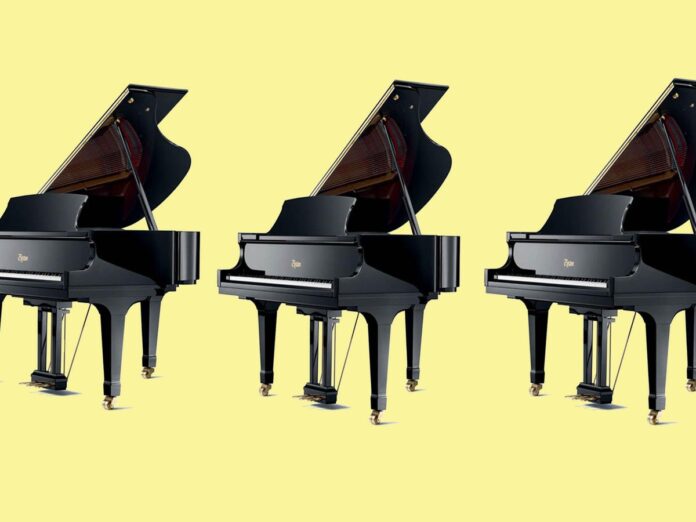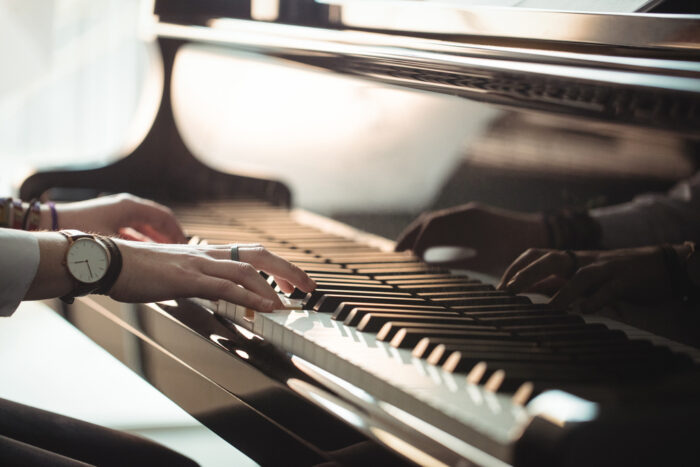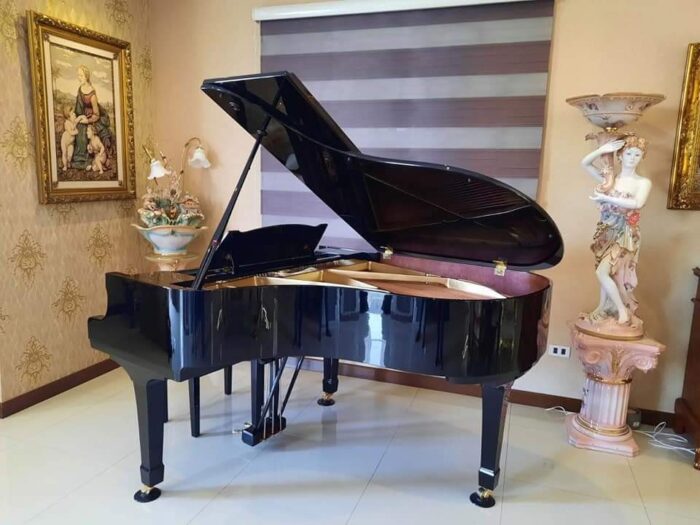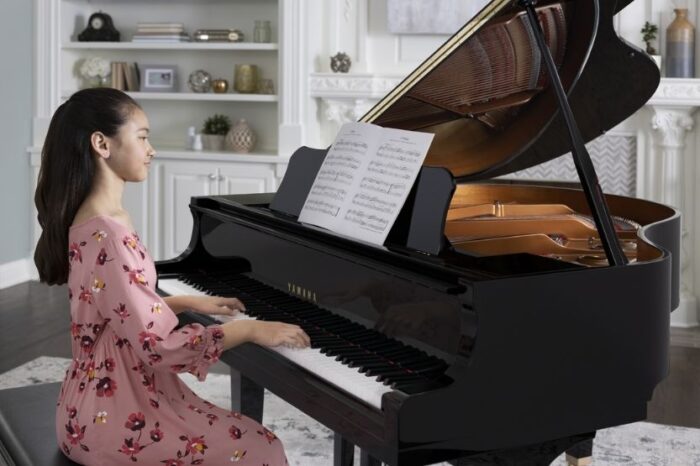
Not many people are lucky enough to consider themself a piano player. As a matter of fact, research shows that there are around 38 millions of people in the world who know how to play piano, while a fair percentage of this number, plays this instrument professionally, on a much higher level – around 20%.
Playing piano is a skill that was always very appreciated, and it was a big plus in society, as it was considered as good manners and as a part of one’s education. Women were taught to play piano from a very young age, along with other soft skills.
Today, there are no limitations of any kind when it comes to learning how to play this instrument. Not only are there numerous courses available, both online and offline, with teachers around the globe who are giving private and group lessons, but there are innumerable resources you can find.

For example, video and audio tutorials that can be found on YouTube. There are even videos where you can see the position of your fingers in certain classical music pieces, so you can follow along and master the piece that you’re currently practicing.
However, what every pianist needs, whether it’s a professional or an amateur, is – the instrument. Generally speaking, there are around 4 types of pianos. These are digital, electronic, upright (which are the most common and the most popular ones) and finally, the grand pianos.
Grand pianos are instruments that you can usually see in movies, and in spectacular and magnificent interiors. If you’ve ever attended a live piano performance, then you’ve also seen what a grand piano looks like, because artists usually play this instrument at concerts.
When asked, pianists state that it’s a completely different experience to play music on a grand piano, compared to any of the upright ones. The reason for this is mainly the fact that they are constructed differently, meaning that the strings are placed in a different direction so the whole installation works in a unique manner.
However, there is one thing that almost everyone is aware of, and that is – playing music on a grand piano is a special kind of privilege, and owning this type of piano is even a bigger one.

If you own a grand piano, this means that you’re either a professional or you have a luxurious lifestyle. But these instruments are not only luxurious by how they look (three-legged, elegant and beautiful wooden artworks) and by their price, they are luxurious because they produce unique sound and they last for decades. That being said, they represent the finest craftsmanship items that can be found, and purchased.
Since grand pianos are something that’s usually passed on to the next generations, you probably have one in your home (if your ancestors knew how to play piano). If this is not the case, and you would like to be the one to start the tradition, then you can purchase a grand piano for your kids and grandkids (and yourself of course).
These pianos have first being played in salons, and they eventually became even bigger in size, when the piano concerts started to happen in big halls and spaces. Finally, people started getting them for their homes, which is why these instruments had to be adjusted in size, once again. If you want to buy a grand piano, should you opt for a baby grand piano or a traditional grand piano?
This is a difficult question for many, and a tough decision to make, especially if you’ve never had a chance to play music on a grand piano and more importantly – you’ve never indulged in the process of buying a grand piano. How to determine what to focus on and how to pick the right one for your needs and your environment? Let’s dive into it.
Grand Means At Least 5 Types Of Grand

Depending on the manufacturer, there are at least three types of Grand pianos. But in some cases it can go up to 7. The main difference between each of them is their size because they all look alike when it comes to design.
The other difference that’s also worth mentioning is the sound. Not every grand piano sounds the same and this is something you should keep in mind when purchasing one.
Petite, baby, medium, parlor, concert… by analyzing the size of the space you have as well as their purpose and your expectations, you can pick the right grand piano for yourself. Click here to see more.
The Sound

As we’ve already mentioned there are some differences when it comes to the sound your piano will produce. What does this mean in reality? It means that if you opt for a bigger grand piano, you will have a broader spectrum of tones.
Baby grand pianos and grand pianos usually sound the same but if you opt for some smaller grand pianos, you can expect a bit of inharmonicity and a somewhat smaller range of volume.
Of course, you should keep in mind that every piano is different and it doesn’t mean that a small grand piano will be worse than a grand piano that’s poorly made or of lower quality, for example. Still, it seems like the most reasonable choice, both when it comes to the budget and the quality, is getting a baby grand piano for your home.

Is buying a grand piano worth it? The answer is most certainly yes. Not only are they visually appealing and they can elevate the interior of any space bringing sophistication and magnificence, but they also produce a unique sound that is more beautiful, clear and better quality compared to all the other types of pianos.
If you can afford it, it is the right choice to make, no matter your experience and your skill levels. Grand pianos have an estimated lifespan of at least 50 years, which means that if you purchase a grand piano, a baby grand piano or any type of this instrument, you will not only invest a lot in your music life, but in future generations as well.
















